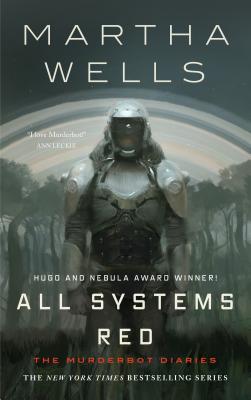|
|
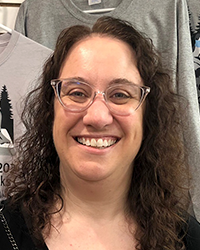 Jen Jen
|
 |

|
|
Revival Season
Monica West
Miriam is the oldest child of Reverend Horton ("Papa" to Miriam and her siblings), who brings his family along when he does a Revival circuit every summer. At the revivals, Papa performs healings. During the previous year's Revival season, an incident which revealed Papa's violent nature occurred that startled the Horton family and had a negative impact on the attendance (and income) of the rest of the circuit. The family has high hopes that that incident will be long forgotten, and that Papa can get back to the usual expectations of a circuit. However, not long into this year's circuit, Miriam witnesses another incident that erodes her faith in her father and his interpretation of the Bible and its teachings, in particular—only men are able to heal. Upon the family's return home, Miriam's best friend has a medical emergency and in desperation, Miriam heals her. Despite efforts to keep it secret, others learn of and ask Miriam for healings. This novel is rich with interesting characters including Mama who was swept up into Reverend Horton's orbit at age 17 (and forbidden to have contact with her "not-saved" sisters). Miriam's goodness is often displayed by her care of her nearly silent younger sister Hannah, who is afflicted with cerebral palsy.  The most remarkable feature of this novel is its pacing. I wish I had read this before the Beagle Women's book group had chosen books for this year because it would make for such a great book group discussion! I listened to this book on libro.fm and the narrator is just right. The most remarkable feature of this novel is its pacing. I wish I had read this before the Beagle Women's book group had chosen books for this year because it would make for such a great book group discussion! I listened to this book on libro.fm and the narrator is just right.

|
| |
|
 |
|
River of the Gods
Candice Millard
Some time ago, I read Destiny of the Republic by this author and really enjoyed it, so when I saw that Millard had released a new book, I started in without knowing what it was about, sure I would enjoy it and I was right! River of the Gods is about the search for the source of the Nile River during the mid-19th century and the explorers who desperately sought the glory of being the first to learn and share that knowledge. Center-stage (at least so far) has been Richard Francis Burton, an explorer who knows 29 languages and has a very healthy self-esteem. In planning for the expedition to find the source of the Nile, Burton had planned to include a friend of his who unexpectedly died just before the expedition left. Burton hastily chose John Hanning Speke in his stead, a decision he regretted for the rest of his life. Burton and Speke were opposites and after the expedition was aborted (I won't spoil the book by giving you details, but it would not be an understatement to say it rivals scenes from the Indiana Jones movies),their relationship went from hostile to sworn enemies. Millard has a way of making new-to-me history of great interest. I highly recommend her books! I'm listening to this on libro.fm, narrated by Paul Michael who has narrated Millard's previous books—an excellent way to experience Millard's writing! I highly recommend her books! I'm listening to this on libro.fm, narrated by Paul Michael who has narrated Millard's previous books—an excellent way to experience Millard's writing!

|
| |
|
 |
|
And There He Kept Her
Joshua Moehling
This a mystery set in Minnesota by a debut Minnesota author. Two teenagers break into a house to steal prescription meds and things go oh-so-wrong, including the imprisonment of one of the teens. Tasked with solving the crime of the missing teens is Ben Packard, the deputy acting as sheriff since the elected sheriff has become too ill to serve. Packard is new to the small community after having left the Twin Cities following the death of his mostly secret boyfriend. Both the mystery and the characters in this book are complex and interesting. I tore through this book and now I'm not so patiently waiting for the next Packard book!
Note: this book will be released on June 14.
|
|
 Sally Sally |
|

|
 |
The Doctors Blackwell
Janice Nimura
A number of years ago we were visiting friends in Maryland, and they took us to a museum in Baltimore. I was captivated by an exhibit about two sisters who were the first female physicians in the United States. I was delighted recently to discover a book had been written about these pioneers—The Doctors Blackwell.
Elizabeth (1821-1910) and Emily (1826-1910) were the first and third women in our country to earn medical degrees, but these did not come easily. Their family had emigrated to the United States from England in 1832. By 1838 they were living in Cincinnati when their father died. He left his widow and their nine children twenty dollars. As the oldest child, Elizabeth quickly founded a school for girls. As time went on, each child supported the family in their own way, whether it was working outside the home or caring for their household and mother.
Elizabeth and Emily were intelligent, intense, and determined. In a time when higher education in general and medical school in particular weren’t welcoming to women, each sister earned a medical degree and went on to pioneer in additional ways.
The Doctors Blackwell traces their long lives, the many obstacles they overcame, their joint work, and the tensions between them.
This book will be discussed at the first meeting of the Sister Wolf Book Group this summer, and I look forward to a rich discussion.
|
| |
|

|
|
Swimming Back to Trout River
Linda Rui Feng
I’ve read several books set in the Cultural Revolution, such as Wild Swans, Life and Death in Shanghai, and others. They all focused on what happened during that difficult period of time. Swimming Back to Trout River is different—it’s set in the years after the Cultural Revolution.
In a small Chinese village in 1986, ten years after the Cultural Revolution ended, Junie received a letter from her father. Junie’s parents had left China for the United States years earlier, leaving her with her paternal grandparents. Now she is ten, and her father writes that he will come for her before her 12th birthday.
Junie’s parents came of age during the Cultural Revolution, and only slowly do we learn about their growing up years, and the way their adulthood has been affected by their experiences.
The book is beautifully written. It’s about the immigration experience but more than that, it’s about family, love, and art. It’s about people who have known heartbreak but who have great resilience and face the future with hope.
The Sister Wolf Book Group will discuss this book on June 15. |
| |
|
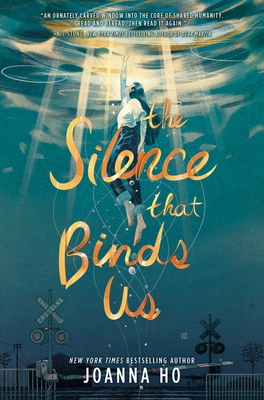 |
|
The Silence that Binds Us
Joanna Ho
The Silence that Binds Us is a young adult novel which will also be an important read for adults.
Near the beginning of the book, Maybelline Chen’s beloved older brother, Danny, commits suicide on the railroad tracks. (This is not graphic and it’s not a spoiler.) Danny has just been accepted to Princeton, but he also has been struggling with depression, which he has hidden from his family and friends. His is the latest of several teen suicides in the community. However, the grieving Chen family is accused at a public meeting of creating a super competitive school environment through parental pressure. May’s parents, who are Chinese immigrants, counsel her that they should keep their heads down. Instead, May writes a passionate poem, which is printed in the local newspaper.
The timely book has a complicated plot. May wants to reclaim the narrative, but also learns to recognize her own complicity with racism. She is working on her relationship with her mother, her best friend and other students at school, and struggles with her attraction to Danny’s best friend.
Ho, who is a high school vice principal, clearly understands young adults and the issues in their lives. She has written a book which is both moving and challenging. Read it, share it with a young adult in your life, and talk about it together.
Members of the Sister Wolf Group will discuss the book this summer. We expect to zoom with the author and are still waiting for the date for that.
Note: the book will be released June 14.
|
| |
|
 |
|
The Boy, the Mole, the Fox and the Horse
Charlie Mackesy
I’ve meant to read this book for a long time, really I have, but never got around to it. It’s been in the store for a couple of years, and we’ve never known quite where to shelve it. We’ve had a run on it this spring because it’s a popular graduation gift. Ah! We put it on the graduation display, and I thought again that I really must read it, but I couldn’t because copies were selling as quickly as they arrived in the store. Finally, we got in a damaged copy, and I sat down to see what all the fuss was about. Oh, my.
It's a lovely book, filled with pen and ink drawings and spare text. A young boy and three animals take a walk and muse about the meaning of life and how they will meet its uncertainties.
No summary, no review can do it justice. Get yourself a copy and sit down for a few minutes to enjoy the gently philosophy of friendship, love, empathy, and how to get on in the world. And if you have an hour, watch this video of the author. |
|
| |
|
 |
|
|
|

Brita |
|
 |
|
The Woman They Could Not Silence
Kate Moore
I was completely caught up in this biography of a woman who made such a positive impact for the betterment of so many people in this country, and whom I, sadly, had never heard of before. The same was true of Moore’s other bestseller, Radium Girls. I highly recommend reading both books. Not enough Herstory classes, apparently.
The story of Elizabeth Parsons Ware Packard, who believed that she had a right to her own opinions, is a riveting account of the perils of a married woman in the mid-1800’s. Elizabeth, a well-educated woman, the wife of Calvinist minister, Theophilus Packard, and mother of six children, not only questioned her husband’s beliefs, but went so far as to express those thoughts to others in the community.
On June 18, 1860, Elizabeth found herself forcibly removed from her own home by the county sheriff and three other male “pillars of the community,” at the behest of her husband, who then bustled her onto a train which would deliver her to the Jacksonville State Hospital. While Elizabeth knew that by Illinois law, a public hearing was required before a person could be committed against his or her own will to the State Hospital for the Insane, unbeknownst to her was the exception that a husband could have his wife committed without such a hearing.
Packard spent the next three years at the Jacksonville State Hospital for the Insane. There she learned that she was not alone in this circumstance. She would only have had to agree with the doctors that she was insane and would change her religious views to be in line with those of her husband to secure her release. She refused to do so and was transferred from the “genteel” 7th ward to the 8th ward “for the hopelessly insane and violent.” She would not give in, but rather did everything she could to make life on the 8th better for all of its patients. Furthermore, she kept writing her journal accounts on whatever scraps of paper or linen (read bedsheets) she could obtain. These entries, detailing her suffering and the injustices and brutality she and others encountered daily, she hid in her bonnet lining to prevent anyone from seeing and destroying them. Waterboarding was a common practice to control, if not to treat, the violently insane.
Packard finally had her public hearing in January 1864 and was declared “sane” by the jury after seven minutes of deliberation. The judge ordered that she “be relieved of all restraints and awarded her “freedom.” In her case, this was the freedom to be penniless, homeless, and prevented from seeing her children. Her brilliant mind, savvy understanding, and unflagging determination to gain her release as a sane person had garnered her many friends who helped her to get her books, based on the journals she had written while at the Asylum, published. Her work to improve living conditions for the unwashed, abused patients had gradually won the support of many of the staff, some of whom later supported her statements and testified before State and Federal Legislators and the courts as bills were introduced to require a jury trial for all persons, including married women, to prove insanity before allowing commitment.
She continued to write books and give speeches across the country, encouraging the passing of laws that had a lasting impact on the civil commitment process, and giving mental patients and married women more rights. Or so we hope. |
| |
|
|
|
|
|

Doni |
 |

|
 |
The Day the World Stops Shopping: How Eending Consumerism Saves the Environment and Ourselves
J.B. MacKinnon
This is a great read for anyone who shops or lives on the earth. MacKinnon does a deep dive into what happens if we don’t curb our consumption and what happens if we do, the economic impact of less. He circles the globe looking at the big-box stores of America, the hunter-gatherers of Namibia, and the sustainable consumers of Ecuador.
He looks at the impacts of long-lasting recessions in countries such as Finland and utilizes much of the data around decreased consumption during the pandemic. He interviews a manager of a mill in Bangladesh that manufactures ‘throw-away” fashion. He visits an island in Japan that has been left behind, and the world they have created in the absence of industry.
While much seems hopeless, this incredibly well researched book offers solutions and ways to mitigate the world we have created. If nothing else, it will have you looking at your own lifestyle and consumption.
|
|
|

Gina |
 |


|
 |
The Netanyahus: An Account of a Minor and Ultimately Even Negligible Episode in the History of a Very Famous Family
Joshua Cohen
This story is a mix of fiction and non-fiction.
It is the story of Rueben Blum, a professor at Corbin College in (not upstate) New York. He is tasked with hosting Benzion Netanyahu (the father of the former Prime Minister Benyamin Netanyau) during his interview process for a position at Corbin. Along the way we get to meet a host of characters, including Reuben’s wife and daughter, his in-laws and his own parents. We also get to spend time with the Netanyahu family, all of whom are an entertaining mess.
This book is funny. I’m not one to laugh out loud when reading, but I did. I also shook my head, gasped, and I learned.
This book is smart. I kept a dictionary close at hand. And I admit, parts of it were completely over my head. This book has sent me on a quest to learn more about Zionism and diaspora. I’d like to revisit this book when I have a better understanding of these topics. That said, I completely understand why this book won the Pulitzer Prize for fiction.
If you are interested in this book, I highly recommend the reviews done by NPR and The New York Times.
|
|
| |
|
|
|
|
|

Hannah
|
|
I didn’t read any of the Black studies books that suddenly appeared a couple of years ago. For me, the best way to learn about such issues is through thought-provoking novels. Here are some examples. |
|

|
|
Something to Hide
Elizabeth George
She’s done it again. The Inspector Lynley novels are best read in order starting with A Great Deliverance. The books are long, so it takes quite a while to get through them all. They are beautifully written page-turners so their length is a blessing. The characters are wonderful; how does she write dialog in each voice so convincingly when they come from a wide range of London class and racial backgrounds? And the mysteries are complex and perfectly plotted.
Something to Hide takes us into the sad and scary world of female genital mutation. It’s an important topic to shine a light on as it still happens, and in Western immigrant communities as well as in Nigeria and Somalia. This makes the book uncomfortable to read at times, but the plot twists make it even harder to put down. There’s a secondary theme about appreciating people you love for who they are instead of trying to change them, which makes for an interesting counterpoint to the argument that some cultural practices are not all right, traditional or not. I’m sorry I finished the book as I will miss reading it.
|
| |
|

|
|
The Underground Railroad
Colson Whitehead
The main character, Cora, was born into slavery on a plantation in Georgia. Her mother was able to escape, leaving Cora on her own when she was just a child. She was a strong little girl who, in the face of a challenge by a large male field worker, managed to hang on to the tiny lot where she raised yams like her mother had. More importantly, she was able to hang on to her sense of self, to never give in to the pressure to be less than a fully autonomous human. She did this in the face of incredible hardships that made the real horrors of the “peculiar institution” come fully to life. This book is heartbreaking, but worth the sadness it makes you feel.
This novel got so far into my head that I started sort of believing that the underground railroad was actually a tunnel with locomotives.
It’s a book you’ll never forget.
|
| |
|

|
|
Such a Fun Age
Kiley Reid
The tone of this book is similar to that of Pretty Little Lies. The subject is race: white entitlement, whites with Black fetishes, Blacks who are in some cases very authentic and in others very invested in their roles in white society. Few of these characters are self-aware, and none of them see the drama headed their way.
Early in the book the protagonist is babysitting for a little girl she loves, when a grocery store security guard accuses her of kidnapping the child. The incident leads to unforeseeable consequences.
This is a book that could only be written by a young Black woman. It’s kind of addictive; hard to put down. It contains a lot of food for thought for such an easy, fun read. |
| |
|

|
|
Interior Chinatown
Charles Yu
The format of this novel is like a screenplay. The characters are referred to with names like Generic Asian Man Number Two/Waiter and Old Asian Woman. These are the roles of the people in the movie that summarizes their life. Most of the characters live in an SRO (single-room occupancy slum) above a Chinese restaurant. The protagonist is named Willie Wu, and he aspires to become a Kung Fu Guy. His parents wish he would aspire to something more.
I think I’ll never see a film with Asian characters again without flashing on this book. It opened my eyes to the difficulties the so-called “model minority” face. Interior Chinatown is an original novel, with a powerful impact. |
|
| |
 |
 |
 |
|
|

Lee |
|

|
|
Woman of Light
Kali Fajardo-Anstine
Taking place from 1868 and into the heart of the Depression, this is a multi-generational historical novel of an Indigenous Chicano family.
The main character, Luz Lopez, is – among other things -- a tea leaf reader. As such, she is the keeper of her family’s memories and stories.
The author provides the reader with fabulous characters, and there is a great deal of historical detail of which I was not aware, such as early radium mining in the Lost Territories and the KKK’s strength in Denver and elsewhere in Colorado in the late 1920s.
Luz and her family live with hope and joy, mostly coming from within their own community, even though the past and present are not without fear, sadness, and loss.
I highly recommend this to anyone who wants to read some absolutely grand historical fiction.
Note: this book will be published June 7.
|
| |
|
 |
|
Boys and Oil: Growing Up Gay in a Fractured Land
Taylor Brorby
In this memoir, Taylor Brorby describes what it was like growing up gay in the coal country of North Dakota. He is now an environmentalist, essayist, and poet; and his love of language and the skill with which he can use it to bring the reader into his life is magnificent.
Although we find dangerous people and wonderful friends over the 20+ years of this book, it is the portraits of his relationships to the various members of his family that truly stand out. And his descriptions of landscapes are beyond compare.
I can assure you that you will feel quite uncomfortable at various points, and you should not expect some kind of magical ending, but there will still be the people, the land, and the events that will fill you with joy.
It is a sad thing when a person cannot find a place for themselves in their homeland.
Note: This book will be released June 7
|
| |
|
 |
|
Moonlight & the Pearler's Daughter, Lizzie Pook
This historical novel takes place in the 1890s in The Kimberley, Western Australia’s sparsely settled northern region. How sparsely settled? Even today, in an area greater than Minnesota and Wisconsin combined, there are less than 40,000 people.
Eliza Brightwell is a young woman. Her father and brother are pearlers, primarily harvesting shells for the mother-of-pearl button industry. (The pearls themselves were valuable but not the industry’s focus.) And although the boat owners were white, the pearl divers who did the dangerous work were primarily Asians, Pacific and Indigenous Australians.
When Eliza’s father goes missing shortly before his ship returns after a 3-month voyage, she is certain he is still alive, and she is absolutely determined to rescue him. An early feminist, she does not let social norms keep her from this pursuit. It is this mystery that drives the narrative, which sometimes seems a bit convoluted.
The author describes the settings and the people in electrifying detail. Occasionally, though, she tends to assume that the reader is familiar with Australian flora and fauna, as when she compares a young man to a godwit.

Note: this book will be released on June 14.
|
| |
|
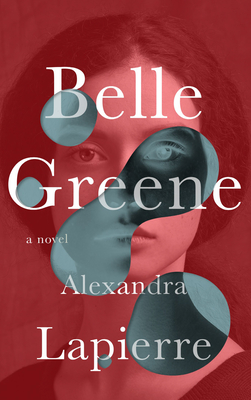 |
|
Belle Greene
Alexandra Lapierre, Translated by Tina Kover
What an incredibly well-written, thoroughly researched, and totally fascinating novel that tells the story of Belle da Costa Greene, who became the director of magnate J. Pierpont Morgan’s library in 1905.
Belle became a librarian at Princeton in 1902, where she met and impressed JP Morgan’s nephew. From him she learned a great deal about collections and collecting. When he suggested to his uncle that she might make a fine director for the personal library he was building, he eventually hired her. She was a dynamo... hard-working, flamboyant, extremely intelligent, beautiful, and a most talented appraiser and connoisseur of manuscripts and works of art. She became the highest paid woman in America and was well-known in the top auction houses and in the most prominent social and cultural circles. (And she knew many of the men in these realms intimately.)
In fact, Belle da Costa Greene was born Belle Marion Greener, daughter of a lawyer (the first Black graduate of Harvard) and a Black mother. By 1898 her father had left the family, and her mother and siblings decided that they would leave their extended family, change their name, and move from Washington, DC, and ... being light-skinned ... pass as white. They fully realized that they could never go back, and if they were discovered in a violently racist America, they would lose everything.
Note: this book will be released June 14.
|
| |
|
 |
|
One's Company
Ashley Hutson
The basic premise of this novel could have been played for laughs... A young woman (Bonnie Lincoln) wins the lottery, builds a detailed replica of her favorite show (Three’s Company), and then lives there, spending a year as each character. Nope. No laughing here, except of the nervous variety. The young woman who wins the lottery has been subjected to horrible traumas in her life, and Three’s Company is the obsession that allows her to escape. With the lottery money, she can truly escape into that world, doing her best to make certain that her fantasy is not interrupted. She becomes increasingly untethered from reality, the illusion is increasingly difficult to maintain, and the ending is cataclysmic. Writing in the first person, the author does a magnificent job of letting us feel the pain and anger of Bonnie Lincoln.
Note: this book will be released in paperback
on June 14
|
| |
|
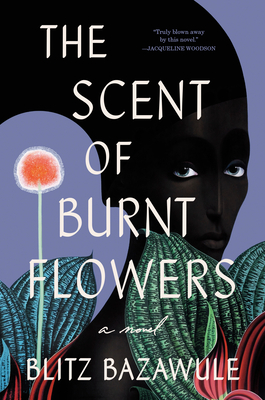 |
|
The Scent of Burnt Flowers
Blitz Bazawule
Bernadette worked in a bookstore and wanted to be a writer. Melvin had fought in WWII, graduated from college, and planned to open the first Black-owned car dealership in Philadelphia. This young couple ran into serious trouble in Alabama in the 1960s and the chase was joined by the FBI when they crossed state lines. They saw their only hope to be fleeing to Ghana where Melvin’s college friend was president.
Bernadette is the one person who is most likeable and honorable. Melvin suffers from a growing and not completely inappropriate paranoia. In a mix of historical fiction, magical realism, Ghanian music, romance, and revenge, there is a parade of characters whose lives intersect those of Bernadette and Melvin. The FBI agent in pursuit of the couple is the perfect stereotype for the era, as is the CIA agent he encounters. Kwesi Kwayson is famous for his highlife music and yearns to be with Bernadette. The first president of an independent Ghana, Kwame Nkrumah, cannot see his own flaws. A royal vanguard of shapeshifters is not invincible. Other characters aid Bernadette and Melvin, but their help generally goes only as far as what they have been paid for.
I found the story fascinating and well-written, even though I am generally not one to tolerate either shapeshifters or magical guitars.
Note: This book will be released June 28.
|
|
| |
|
| |
|
|
|

Tim
|
|

|
|
Young Mungo
Douglas Stuart
It isn't often that you begin a book and are immediately caught up in the story. At least, that doesn't seem to happen all that often for me. Generally, it takes about 50 pages, before I begin to "feel it.” I haven't read Stuart's first novel, Shuggie Bain, but if you have, I envy you the prior experience of his well-rounded characters. Don't misunderstand, the people you'll meet in Mungo, have some SERIOUS ISSUES, but Stuart's craft/gift is to be able to make them understandable and very real. Mungo is the third child in a dysfunctional, single-parent family living in public housing in Glasgow, Scotland. His mother is a marginally employed self-absorbed alcoholic. His older brother is the neighborhood bully; his sister tries to keep the family in some sense 'together'; and Mungo, is a 'sensitive' young man, in the seemingly worst possible situation to begin exploring his romantic interests.
This book has given me a template by which to experience and judge a writer's character development. In another book I was reading, which I was having trouble with, the characters felt like cardboard cut-outs. It wasn't until I realized they felt different, because the writer's skill wasn't as well developed as Stuart's. I'd be interested in hearing what you think. |
| |
| |
|

|
|
Chronicles of Fairacre
Miss Read
Over the course of the past few weeks, I tell you frankly, I'd become ragged and worn with the late Spring and the news of the bewildering waste and cruelty of Russia's war on Ukraine. I'd just finished reading Young Mungo and needed some fiction of a more wholesome and positive outlook. Mrs. Dora Saint, whose penname is Miss Reed, wrote dozens of stories about rural English village life just after World War II. In this collection of three tales: Village School, Village Diary, and Storm in the Village, the reader is shepherded through the day-to-day, season-to-season, modestly domestic concerns of Fairacre village. Our guide is the schoolteacher, Miss Read, and it's through the lens of her character that we're told the stories of this early 1950's community. The war is over, rationing has just ended, and as yet there's no hint of the coming economic and social changes of the 60's. To me, it seemed a "charmed" period of maybe a decade, where people felt relief at having survived the war, and were able to focus on their own little world. A world of small, thatched cottages set in their well-tended gardens. It was exactly the escape I needed. |
|
|
Would you like to be a guest reviewer?
Email Sally at sally@beagleandwolf.com |
| |
|
|
|
|
|
— page top —
|
|






 Sally
Sally













